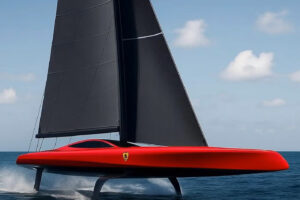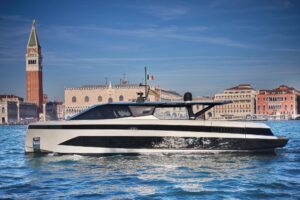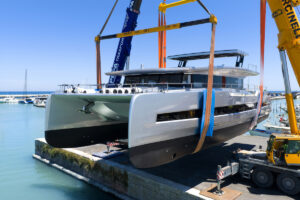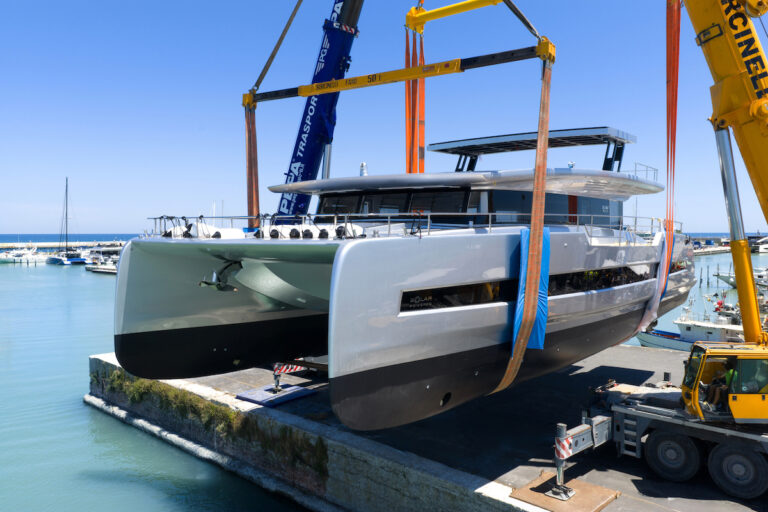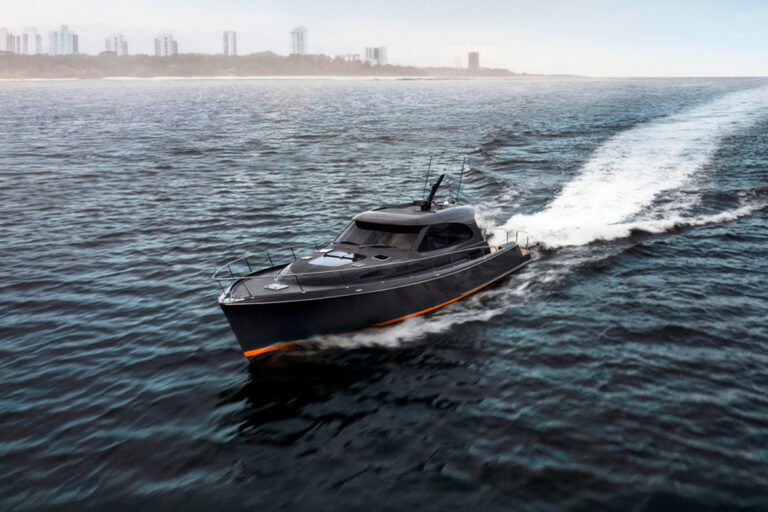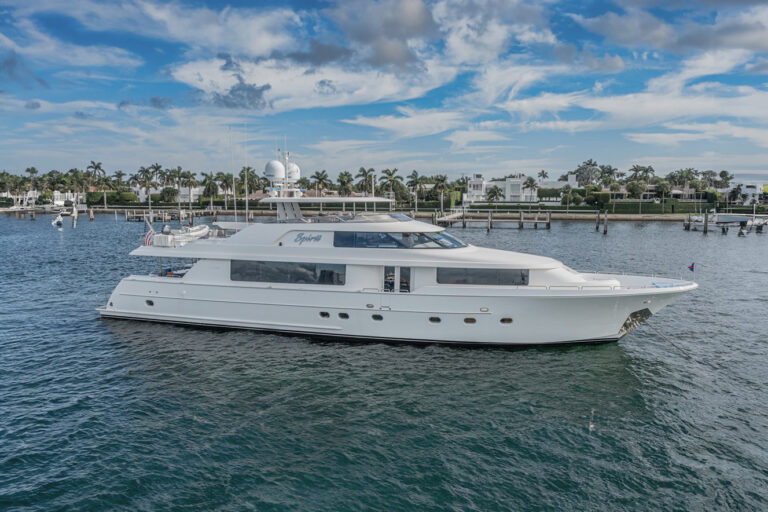
stephens1.jpg
Impressively long overhangs, a sinfully subtle sheerline, elliptical portlights in the topsides, and butterfly hatches in the deck define the spirit of this wood/epoxy yacht from the boards of Brooklin Boat Yard Design Associates. Belowdecks, white panels, cabin soles stained rich ebony, a gas fireplace, and custom couches in the main lounge area reinforce our first impression-that we are in the presence of an exceptional yacht.
Robert Stephens, chief designer, and Paul Waring, associate, comprise the design office, and they carry on the tradition that designer/builder Joel White began in 1960 with the opening of the Brooklin Boat Yard in the town of Brooklin, Maine. Having the design office and building yard under the same roof takes a page from the Herreshoff Manufacturing Company. You won’t find a more symbiotic relationship than this. Also in the tradition of the Herreshoffs, Stephens and Waring lean toward classic lines-below and above the datum waterline (DWL)-and, like the Herreshoffs, they can go modern in a heartbeat when the client wishes.
This 90-foot yawl reflects Stephens’s work on the 76 foot W-Class day-racing sloops that the late Joel White designed in the 1990s. Seakindly and faster than their DWL indicates, the W-Class boats have the long overhangs, spoon bow, and graceful counter stern that won the heart of the client and sent him to the Brooklin Boat Yard. He wanted the same classical look and feel, the wood/epoxy construction, and 21st century systems in a yacht that would be capable of cruising the seven seas safely and comfortably. I have no doubt that the owner will get exactly what he wanted.
We find the soul of every fine yacht below the waterline. Of the two mediums in which a sailing yacht functions-air and water-the latter is the least forgiving of slipshod design. Water, unlike air, won’t be compressed, making it less tolerant of abrupt changes in direction. Sharp edges below the waterline create eddies, which increase drag, as do bumps and hollows. In the designing of a pure displacement sailing yacht-one that has no aspirations to plane-the naval architect must draw the fairest of waterlines, progressing from a fine entry through the maximum beam and on to the point at which the water separates from the hull at the after end of the waterline. Stephens has drawn for this yawl one of the most graceful underbodies afloat, and you can bet it will work with the sea, not against it.
The lines plan shows fairly deep sections amidships-a deadrise of more than 20 degrees-and gently rounded bilges. The buttock lines, which run fore and aft as though someone had cut the hull into a dozen slices along its longitudinal axis, describe a perfectly fair arc from stem to stern. When the yacht is under sail and heeling at its optimum, the water will clear the run a little abaft the spade rudder. Her sailing length will exceed her static waterline length, and the waterline should remain relatively undistorted. She’ll have an easy motion as she parts the seas and needs little attention to stay in the groove. In fact, she’ll sail herself from a beam reach up to close-hauled, without an autopilot’s intervention. Simply adjust the trim of the mizzen sail.
Lateral resistance comes from a long and shallow keel of hydrodynamic sections. This is a true fin bolted to the keelson, and Stephens said that it provides all the lift the yacht needs to sail respectably close to the wind. He’d toyed with the idea of designing a shallower keel and adding a centerboard, but he and the owner ultimately rejected this option as being more complex to build and more troublesome in use than the small increase in windward ability the board would provide. A balanced rudder of moderate chord and span will give good feel at the wheel and quick response to steering input.
Yawl rigs may not be fashionable these days, but they suit this cruising yacht perfectly. This one is as modern as you can get. Southern Spars teamed with North Sails to design the sails and sticks together-to perform as a package-which they claim will optimize the boat’s performance. Standing rigging is carbon fiber and is three times the price of stainless steel rod rigging. The makers have predicted a huge increase in the lifespan of carbon versus stainless steel, an important consideration for a yacht that will be at sea for long periods of time.
If the underbody is the soul of a yacht, its aesthetics are the heart. Most of us fall in love with the look of a boat, as did the owner of this 90 when he saw the W76 sloops. We find here that the needs of his family, the crew, and the inclusion of up-to-date systems have compromised the yacht’s appearance above the exquisite sheerline. All that space devoted to comfortable living had to come from somewhere, and Stephens wisely chose to meet the demands with traditional upright trunk cabins and a chart house/salon. Any attempt to streamline these structures would spoil the styling. The banks of windows in the chart house flood the interior with light and let the occupants enjoy the passing scenery. Belowdecks, we find the owners’ stateroom way back aft and their teenage daughters’ stateroom all the way forward. Peaceful coexistence was the goal. The remaining staterooms will accommodate captain, crew and occasional guests.
No one should fear modern wood/epoxy construction. It is a lightweight and cost-effective way to build a one-off yacht of this size, has great resistance to impact and is beautiful. Belowdecks, this method shows off the wood’s most endearing characteristics-warmth and beauty. Look for a launch date of the Stephens 90 early in the summer of 2009.
Brooklin Boat Yard, (207) 339-2236; www.brooklinboatyard.com


